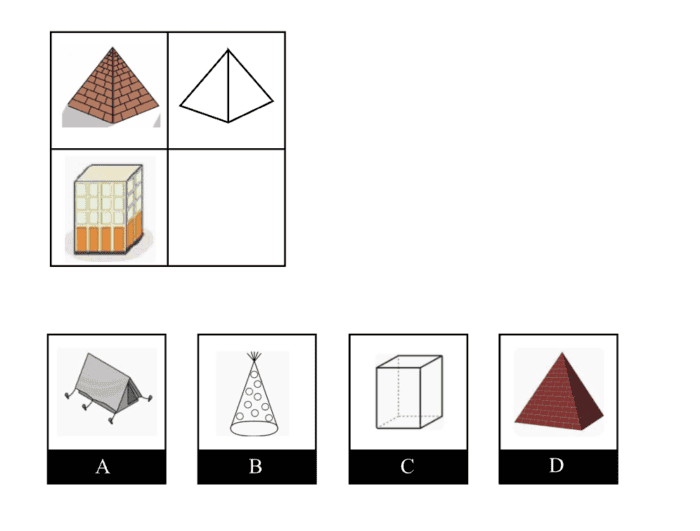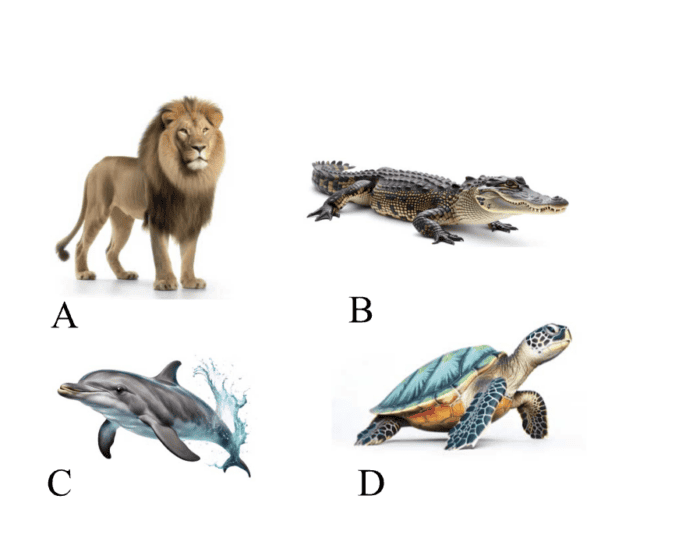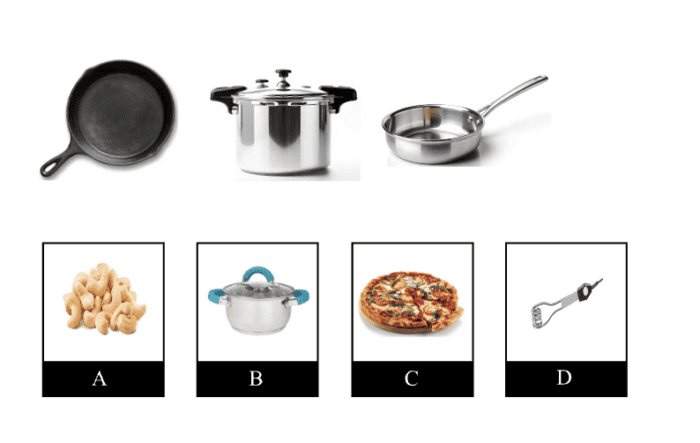Preparing for the CogAT Verbal section helps students build confidence and improve their chances of success in gifted programs.
This guide provides clear tips, example questions, and effective strategies to strengthen verbal reasoning, expand vocabulary, and understand word relationships.
With focused preparation, students can tackle the test confidently, grasp challenging concepts, and perform at their best.
Let’s explore the steps to make preparation for the CogAT Verbal section simple and productive.

Hey there! Do you have a question about the test or our practice package? Email me at roman@staggingapps.website. I'm here to help your child succeed!
The Verbal Battery is one of three main sections in the Cognitive Abilities Test (CogAT). It evaluates a student’s ability to work with verbal information and understand word relationships.
This section includes questions on vocabulary, sentence structure, and word associations. It is designed to measure verbal reasoning, a key skill for academic success and problem-solving.
By testing vocabulary, memory, and word relationships, the Verbal Battery helps identify gifted students and assess their critical thinking abilities.
The Verbal Battery in the Cognitive Abilities Test includes three subtests: Verbal Analogies, Sentence Completion, and Verbal Classification.
Familiarity with these question types is essential for effective preparation. Below is an overview of each subtest:
In this subtest, students analyze the relationship between two given words or images. They must then identify a similar relationship between a third word or image and one of the answer choices to complete the analogy.
In this question, there are three pictures. The first two pictures go together in some special way. Choose the picture from the answer choices that goes with the third picture.

In the first row of the first box, the pyramid has a colored brick texture and the second box has the same shape as the pyramid in the first box without color.
In the same way, the second-row first box has a cubic house with different color textures, so the second box has the same cubic without color. Hence, the correct answer is option C.
This question provides a pair of words that go together in a certain way and a third word. Choose a word from the answer choices that goes together with the third word in the same way.
fence → privacy : tree →
A. leaves
B. plant
C. forest
D. row
E. shade
The correct answer is shade. A fence provides privacy. This is a feature of the fence. A tree provides shade. This is a feature of a tree.
In this case, the first word (a noun) is paired with a feature or benefit (the second word) of having the first item.
In sentence completion questions, students are presented with a sentence where one or more words are missing. They must choose the correct word from a list of options that best completes the sentence, testing vocabulary and understanding of context.
For the lower CogAT levels from Kindergarten to 2nd Grade, the students will either listen to an audio recording or the teacher will read the sentences for them.

According to the audio recording, we need to find an animal that does not live in water.
Lions do not live in water, so the correct answer is option A.
When _____ candidates for a new position, it is _____ to assess their communication skills.
A. reviewing .. unimportant
B. hiring .. unnecessary
C. evaluating .. crucial
D. promoting .. irrelevant
E. training .. required
Correct Answer: evaluating .. crucial
Explanation: The process of “evaluating” candidates involves assessing various skills, and “crucial” emphasizes the importance of communication in this context. Other options are incorrect because:
This subtest requires students to determine which word or image belongs in the same category as a provided set. It measures their ability to recognize patterns, group items, and understand similarities among objects or concepts.

The images show different types of cooking pans: a skillet, a pressure cooker, and a saucepan. The missing image should be another cooking utensil.
The correct answer is B (pot) because it’s another item used for cooking, like the pans.
area radius perimeter
A. measurement
B. rectangle
C. circle
D. diamond
E. diameter
The correct answer is diameter. An area, radius, perimeter, and diameter are each mathematical measurements. These measurements involve mathematical formulas.
The CogAT Verbal Battery is scored using raw scores, Universal Scale Scores (USS), Standard Age Scores (SAS), percentile ranks, and stanines. These scoring metrics allow schools to compare a student’s performance with others in the same age group.
For a detailed explanation of these scoring methods across all CogAT sections, check out our guide on CogAT Scores. This guide outlines what defines a strong score and its role in gifted program placement.
A strong score for the Verbal Battery typically aligns with the requirements of the gifted program in question. In most cases, scores in the 90th percentile or above are considered competitive.
An SAS score of 120 or higher is often viewed as strong, and stanine scores of 7 or above indicate solid performance.
CogAT scores are essential for determining eligibility for advanced academic programs. Schools focus on students scoring in the top 5–10% of their age group, with high marks in at least one of the three test sections: Verbal, Quantitative, or Nonverbal.
The Verbal Battery is especially important for programs emphasizing skills in language, reading, and communication. High scores in this section can significantly impact placement opportunities.
Recognizing your child’s learning style can make their Verbal Battery preparation more effective and engaging. By adapting study methods to how they learn best, you can enhance retention and encourage active participation.
Visual learners understand best when they see information. Use flashcards with images and definitions to help them learn new words.
Create visual aids like word maps or diagrams to show relationships between words, making abstract ideas easier to understand and remember. Incorporating color-coding or highlights can make the information even more engaging and easier to recall.
Auditory learners retain information through listening. Use educational podcasts or verbal drills that incorporate vocabulary in context. Read questions aloud and discuss their meanings to reinforce understanding and verbal reasoning skills.
Encourage your child to explain answers out loud, as verbalizing their thought process can further solidify their learning.
Kinesthetic learners excel through physical interaction. Engage them with activities like word puzzles, movement-based games, or acting out new vocabulary. These approaches make learning dynamic and memorable.
By aligning study methods with your child’s learning style, you can create a tailored approach that boosts both confidence and results.
Building verbal reasoning skills doesn’t have to be limited to study sessions. Incorporating fun and practical activities into daily life helps children strengthen vocabulary and reasoning skills in a natural and engaging way.
Games like Scrabble, Boggle, and crossword puzzles are excellent tools for enhancing vocabulary and understanding word relationships. These activities encourage children to think critically about how words are formed and connected, all while keeping the process enjoyable.
Engage your child in discussions where they explain or describe concepts in their own words. Whether talking about a book, an event, or a favorite show, these conversations help them practice clear expression and critical thinking about language.
Ask your child to create their own stories or imagine new endings for familiar ones. This activity helps them understand how words and ideas connect while practicing sentence structure and communication skills. It also boosts creativity, which supports verbal reasoning.
These simple, everyday activities make learning verbal skills fun and effective while fitting seamlessly into your child’s routine.
The number of questions in the Verbal Battery varies by grade level. Younger students (Kindergarten to Grade 2) typically encounter 14–20 questions per subtest, while older students (Grade 3 and above) may face up to 24 questions per subtest.
The total number of questions across the Verbal Battery usually ranges from 40 to 60, depending on the grade level.
The Verbal Battery is administered to students from Kindergarten through Grade 12. The test is designed to match the cognitive development of each age group, with younger students answering picture-based questions and older students solving more abstract verbal problems.
Each grade level has a tailored CogAT version, ensuring the difficulty level aligns with the students’ abilities.
Yes, online resources are available for practicing the Verbal Battery. These include free sample questions, full-length practice tests, and targeted preparation programs.
Practicing online helps students familiarize themselves with the question formats and test environment, making them more confident on test day.
Preparing your child for the CogAT Verbal Battery is a crucial step toward helping them succeed, whether the goal is placement in a gifted program or improving verbal reasoning skills.
By combining practice tests, flashcards, and contextual learning through everyday activities, you can create an engaging and effective preparation plan. Adjusting study sessions to suit your child’s learning style—visual, auditory, or zkinesthetic—ensures better focus and retention.
With consistent practice and the right strategies, your child can approach the CogAT Verbal Battery with confidence. You can help them perform at their best and take a strong step toward future success.

Sharpening your child's skills with lifelike practice for gifted tests and school exams.
© 2025 GiftedReady | HTML Sitemap